Elderberries are particularly abundant this year and I would thoroughly recommend gathering them to use with blackberries in a pie or a crumble, with a few apples too, or in one or both of the suggestions below.
Gathering Elderberries
The best way to gather Elderberries is to use a pair of scissors to snip of the bunches of berries, which are individually quite tiny.
Next, you need to remove the berries from the stalks and this is most effectively achieved using a fork. However, watch out for the tiny juice spurts that go a long way. I ended up with elderberry juice on a wall about 3 feet away from where I was working!
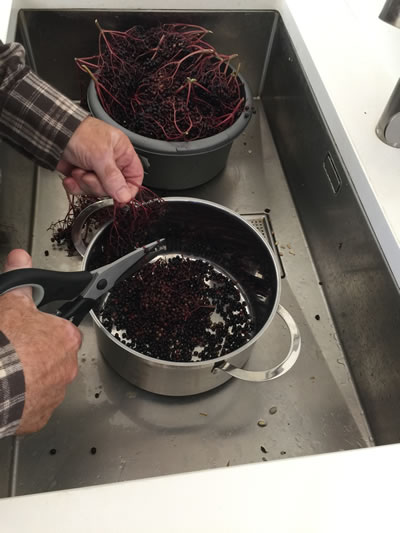
Making Elderberry cordial
Children can get involved in this process but obviously extra care needs to be exercised when dealing with the hot cordial liquid. Probably those aspects are best dealt with by an adult.
So, the first thing you need to do is to find glass bottles that can be sterilised prior to filling them with the cordial you’re going to make.
Sterilising bottles is quite simple. Put the bottles onto the oven shelves (put baking paper underneath if you have some) but avoid putting them on the bottom of the oven and make sure they are not touching one another. Heat the oven to about 140°C/210°F/Gas Mark 1. Leave the bottles in the oven for about 15-20 minutes. . You can either turn off the oven and allow them to cool inside, or carefully remove them from the oven using gloves and leave for 15 – 20 mins to sufficiently cool so you can handle them comfortably when pouring in the cordial liquid.
Making the cordial
Weigh the berries you’ve stripped from their stalks, then put the them in a pan with water to about half way up the berries. Make sure the pan is large enough to cope with a boiling liquid, which can alarmingly rise up the pan and perhaps boil over if you’re not paying attention.
Squeeze in some fresh lemon juice and add sugar. Any type of sugar will do. Quantities of sugar can vary, depending to taste. Too little and the cordial may start fermenting after being bottled. I’d suggest sugar to about half, or a bit less than the weight of the fruit.
Next, simply heat the pan until the liquid is simmering. Allow that to continue, on a low simmer, until the sugar has all dissolved and you have a lovely rich red liquid (appox 20 – 30 minutes). At that point remove the pan from the heat and then strain off the juice using a sieve. (Don’t throw away the berry pulp that’s left).
I suggest standing your sterilised bottles in the sink, before carefully, using a funnel, pouring the hot liquid into them.
The next step is to seal the bottles while the cordial is hot, helping to preserve it. You can choose to put some spices, such a piece of cinnamon stick, into the bottles before you add the liquid. This adds more complex flavours. Maybe do one bottle with spices, one without and see which you prefer.
Where you store the cordial is up to you. If you have room in the fridge then that might be a good idea. However, in a cupboard should be fine, so long as it’s cool.
How to use Elderberry cordial
You can pour the cordial over pancakes, cereal, ice-cream or whatever you fancy really. I love to drink the cordial with sparkling water, diluted to taste.
Now – before you throw away the remaining pulp of berries, read on. Get creative with Elderberry dyeing…
This is a great way to use up left-over berries after making cordial!
You will need
An adult in supervisory mode for sure!
750 ml white vinegar (available in supermarkets)
150g elderberries (removed from stems using a fork)
Large saucepan
Large bucket or bowl
Fabric (use cotton or muslin). I used 2 muslin cloths (approx. 100g dry weight)
String for tie dying (optional)
How to make Elderberry dye
- Boil vinegar in a large pot and add elderberries. Adding more berries will produce a darker dye.
- Wait for the berry and vinegar mix to come to a boil and remove from heat.
- Strain the mixture through a sieve to remove the berries
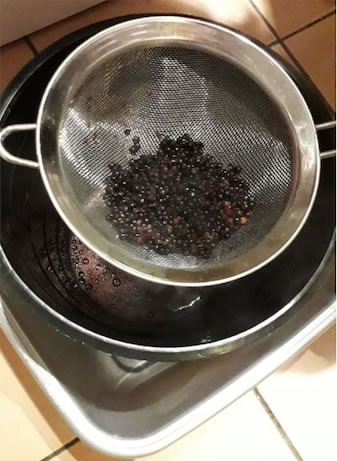
- Immediately transfer the berry solution to a large bowl or bucket.
- Submerge the fabric so it is completely covered. Optional: roll the fabric and tie pieces of string around it before submerging if you want to create a pattern.
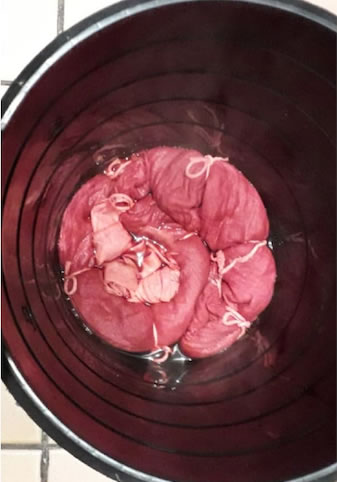
- Leave overnight.
- Hang the dyed fabric on a clothesline or place it on a drying rack.
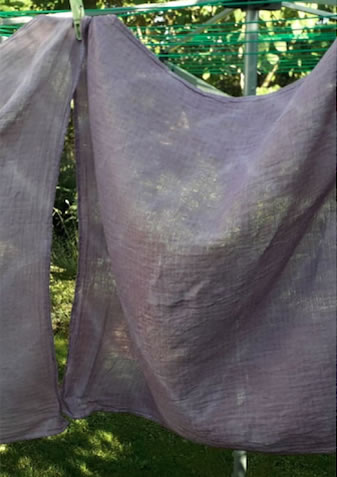
- Allow it to dry completely before rinsing in cold water. Note: at this point some dye will wash out!
- Ensure fabric is completely dry before using.
Thanks to Liz Evans for sharing this Elderberry dyeing project
Would you like to access more ideas like this?
Join our Online Community where we not only share recipes, nature conneciton activities, games and quizzes but also time around a virtual camp fire.

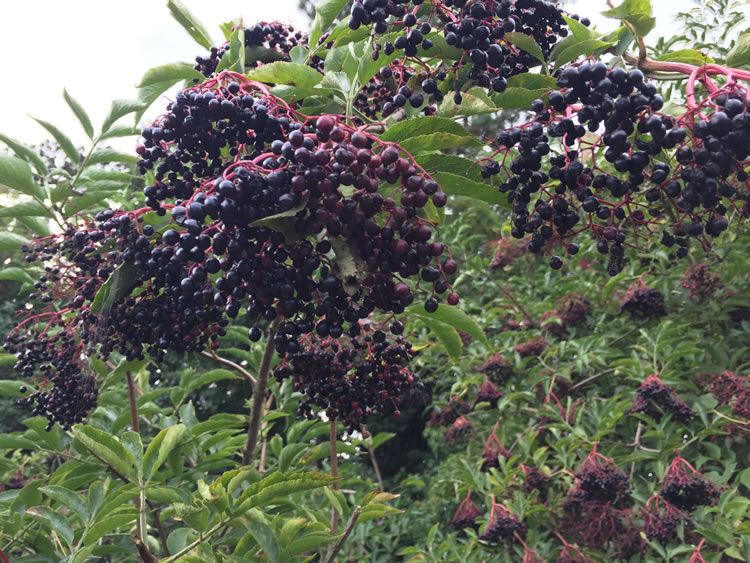
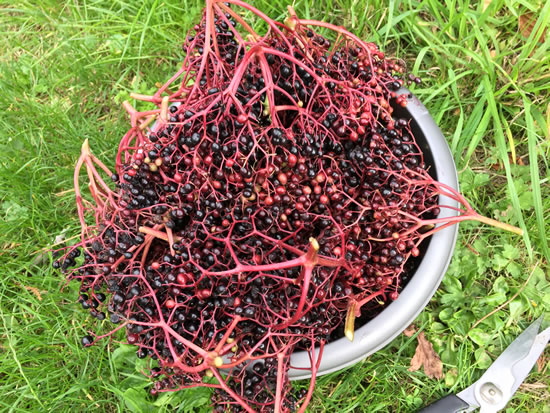
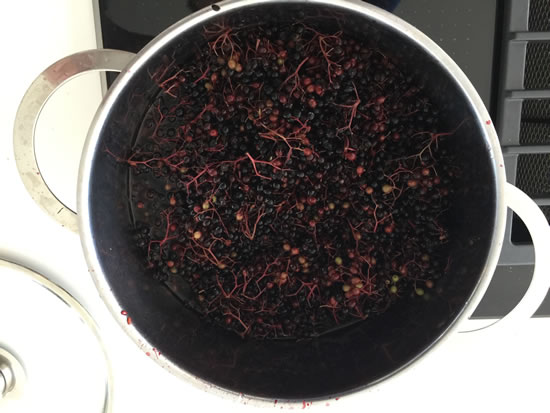
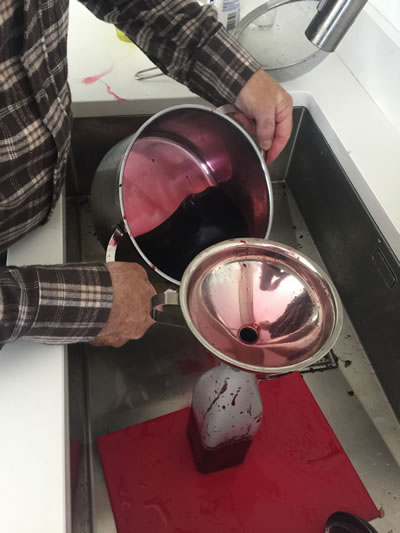
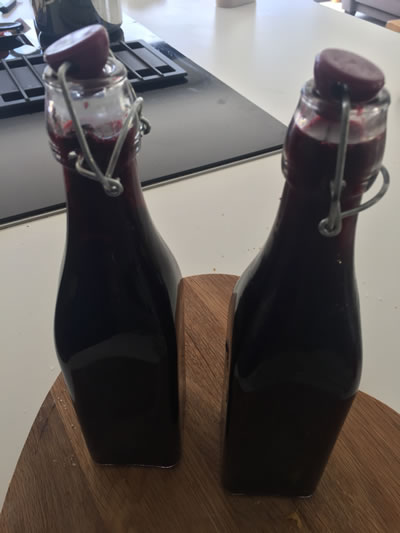
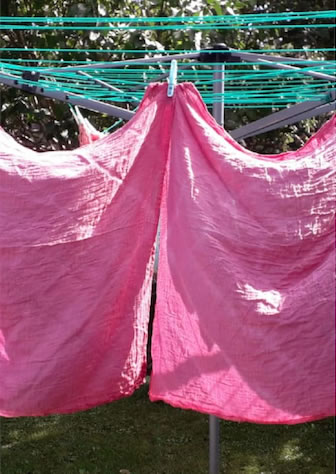
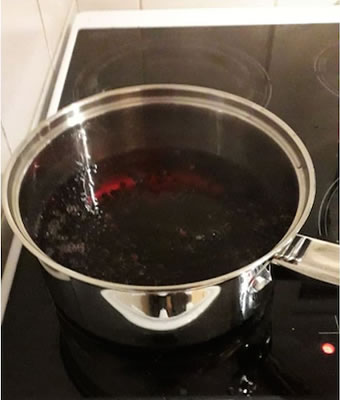
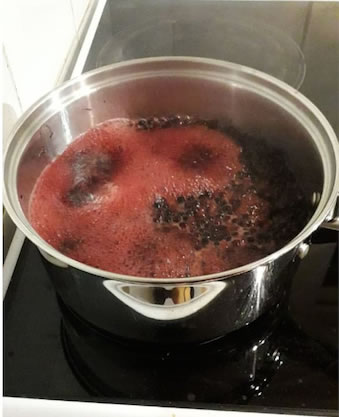
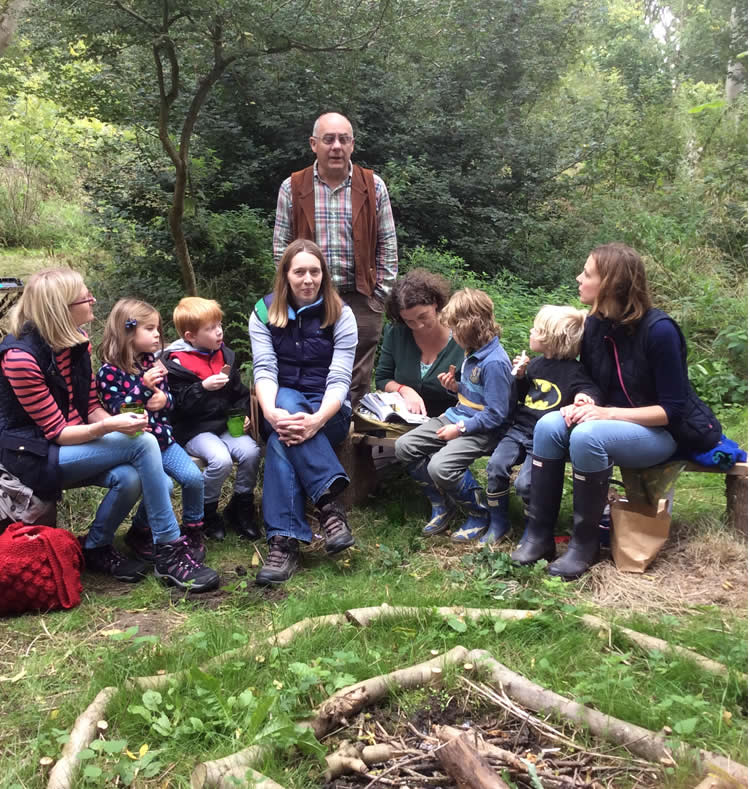

Recent Comments